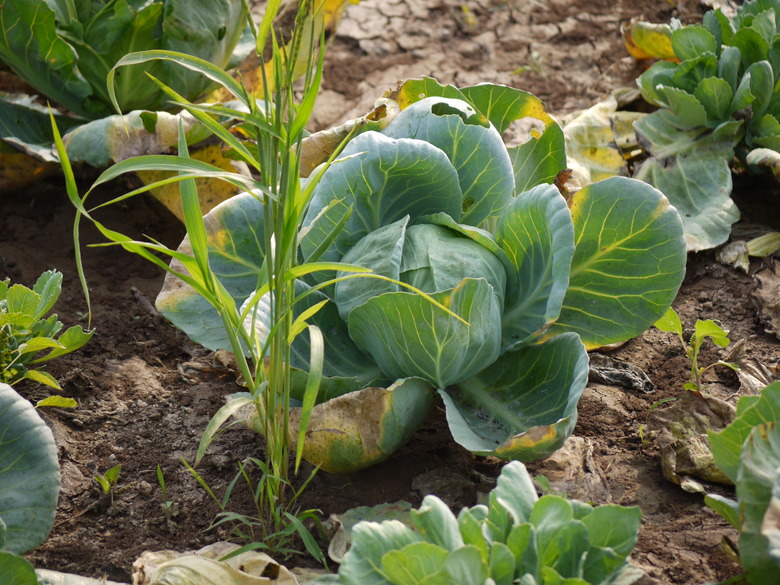What Are The Planting Times For Garden Vegetables In Virginia?
Planting times for garden vegetables in Virginia, determined by United States Department of Agriculture hardiness zones as well as soil type and irrigation needs, range from early to late spring. Because the state stretches from higher elevations in the west to the coastal plain in the east, successful gardeners in different parts of Virginia use hardiness zones to determine when to plant.
Virginia Hardiness Zones: 5a to 8a
Virginia, the 35th-largest state in the U.S. by area, encompasses USDA plant hardiness zones 5a to 8a. Zone 5a/5b is very small, covering about half of mountainous Highland County on the state's far western border with West Virginia. The rest of the higher elevations in the west are in zones 6a/6b where the last spring frost is in late April and early May.
The bulk of the state is in zone 7a, with a last spring frost in mid-April. Zone 7b, with a last frost in early April, covers the southeastern portion of the state. Because of its proximity to the Atlantic Ocean, the easternmost part of the state around the Chesapeake Bay and on the eastern shore is in zone 8a, where the last frost is also in early April—but the growing season stretches almost to the end of November.
The Virginia Cooperative Extension has a handy garden planning tool that includes a hardiness zone map and detailed information on when to plant, how much to plant and when to harvest. Use the Garden Guides interactive tool to plan your physical garden space.
Tip
If you're uncertain about your soil type, send a sample to your local extension office and plan your vegetable choices based on its report.
Tips for Gardening in Virginia
The hardiness zone is not the only factor you need to consider when deciding when to grow cabbage in Virginia, for instance.
Know Your Soil Type
The soil type, the nutrients present in the soil and irrigation needs change from region to region. Soil in the Appalachian and Blue Ridge mountains in western Virginia was formed from limestone and shale, while coastal regions can be sandy or clayey.
If you're uncertain about your soil type, send a sample to your local extension office and plan your vegetable choices based on its report.
Start Seeds Indoors
Gardeners in the colder hardiness zones can get a jump on the growing season by starting seeds indoors and transplanting them when the weather warms.
The seeds of frost-tender and cold-sensitive vegetables can be started in mid-March. Very hardy, frost-tolerant vegetables can be planted outdoors as soon as you can work the soil. Semi-hardy vegetables can be planted two to four weeks before the last frost.
Consider Harvest Dates
Keep the harvest date in mind when planning the garden. Cabbage, beets and broccoli are among the vegetables to plant in August in zone 8, and all will be ready to harvest by early to mid-October. In zone 6a, the last harvest date is late December for carrots and leeks.
Example Planting Calendar for Richmond, VA
Richmond's metropolitan area spans hardiness zones 7a and 7b, with the majority of the city in zone 7a. The last killing spring frost typically occurs between April 15 and 25, while the first killing fall frost happens between October 15 and 25.
The earliest crops, collards, kale, mustard and garden peas, planted in early March, will be ready for harvest at the end of April. A second crop of collards, kale and mustard can be planted in early August for harvest in early October.
Vegetables that should wait until the chance of a killing frost is over include bush and pole beans, cucumbers, eggplant, okra, peppers, squashes, tomatoes and watermelon. On the other hand, heat-sensitive vegetables, like cauliflower and broccoli, shouldn't be planted after mid-May.
Carrots, leeks, rutabagas and spinach can be harvested well into December. Using cold frames or row cover fabric can extend the harvesting window by two to four weeks. Some crops, like cabbage, radish and turnips, may even survive a mild winter.
References
- Virginia Cooperative Extension: Virginia's Home Garden Vegetable Planting Guide
- Virginia Cooperative Extension: Local Offices
- Virginia Cooperative Extension: Plant Propagation from Seed
- Oregon State University Extension: These Cold-Hardy Vegetables May Stick It Out Through the Winter
- Virginia Cooperative Extension: Soils of Virginia

